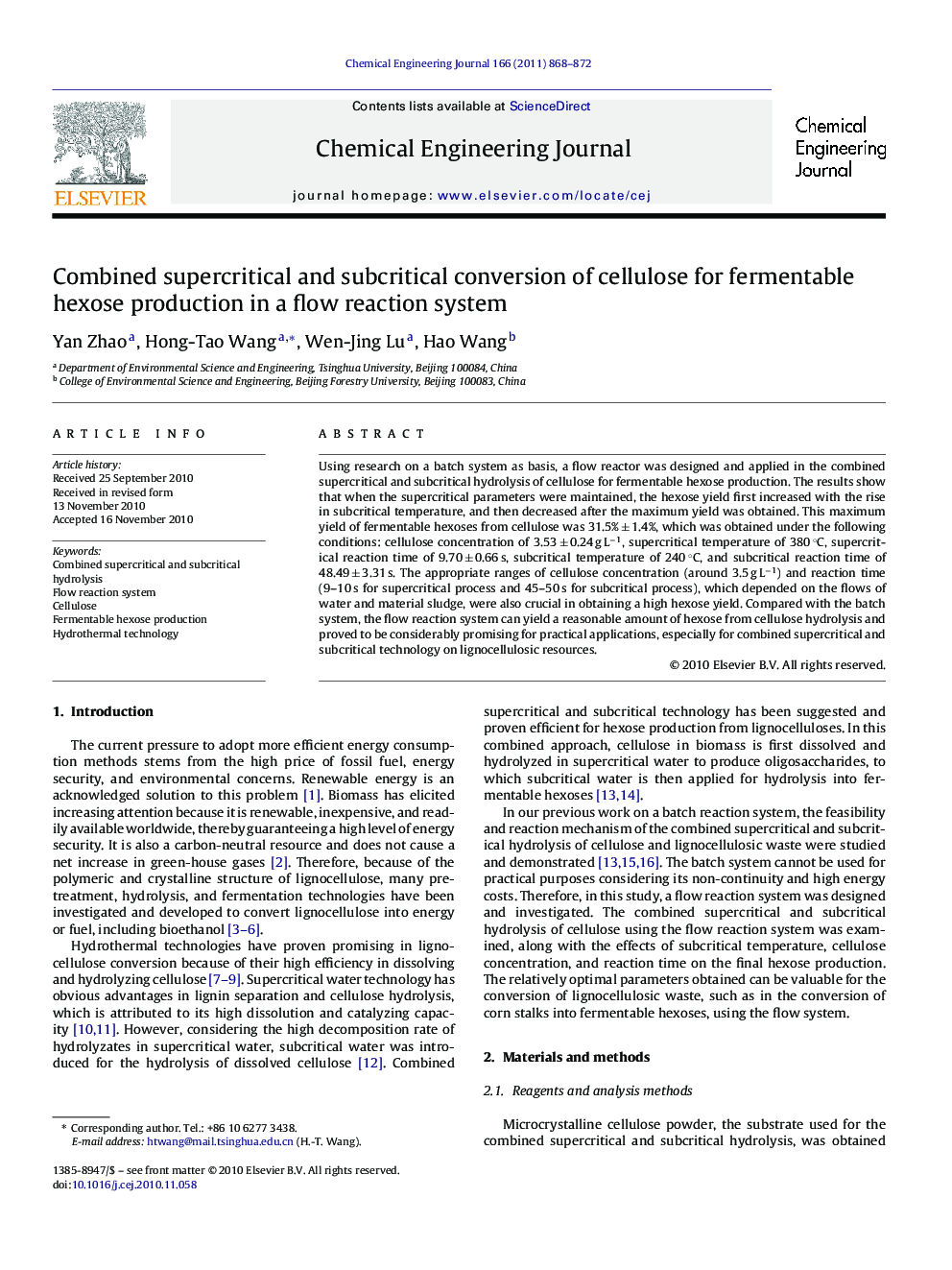| Article ID | Journal | Published Year | Pages | File Type |
|---|---|---|---|---|
| 151463 | Chemical Engineering Journal | 2011 | 5 Pages |
Using research on a batch system as basis, a flow reactor was designed and applied in the combined supercritical and subcritical hydrolysis of cellulose for fermentable hexose production. The results show that when the supercritical parameters were maintained, the hexose yield first increased with the rise in subcritical temperature, and then decreased after the maximum yield was obtained. This maximum yield of fermentable hexoses from cellulose was 31.5% ± 1.4%, which was obtained under the following conditions: cellulose concentration of 3.53 ± 0.24 g L−1, supercritical temperature of 380 °C, supercritical reaction time of 9.70 ± 0.66 s, subcritical temperature of 240 °C, and subcritical reaction time of 48.49 ± 3.31 s. The appropriate ranges of cellulose concentration (around 3.5 g L−1) and reaction time (9–10 s for supercritical process and 45–50 s for subcritical process), which depended on the flows of water and material sludge, were also crucial in obtaining a high hexose yield. Compared with the batch system, the flow reaction system can yield a reasonable amount of hexose from cellulose hydrolysis and proved to be considerably promising for practical applications, especially for combined supercritical and subcritical technology on lignocellulosic resources.
